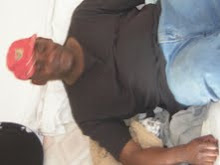By Omoseye Bolaji
Very
interesting comments here. It would appear that there is nothing else to say.
But what about the new book itself which I initially read in electronic
form?
I would like to approach the book in apparent
sections, though there is no such formal distinction in the work itself; so my
approach is personal. For those who have come to expect the unexpected, or a
measure of twists and turns in Bolaji's writing, the following chapters would
stand out: The Termagant, The Shocker, Lucy, The Library.
Some humour runs through a great deal of the
short pieces here, probably moreso in the following: Keeping abreast of things,
The bizarre episode, What is this, The Taxi, and The Termagant.
As regards sports, at least two of the
chapters focus on this: The fervour of the hordes; and Reminiscences of a
sportsman. The latter obviously contains an account from an ex-footballer of
some substance who touches on some aspects of the game that would not occur to
the ordinary fan.
The chapter
or story, Oloolu, stands out for its sustained tension and suspense. It is
dramatic, terse, vivid, and I dare say frightening. It involves the old
ancestral masquerades of west Africa, which Bolaji incidentally touched on in his book, Thoughts on Free State Writing (2002)
One would
expect occasional solid references to literature in this work, though in the
main it is actually limited. The author's tribute to the magnificent writer,
Wole Soyinka is the major article in this wise; though there are many other
literary allusions in chapters like, A Man of the People, The Man Died, The
Library, and even in Oloolu.
The scholar,
Achal Prabhala has contended that in real life there are glimpses of the
"Misanthrope" in Bolaji himself. (He correlates this with his impressions
of the novel, People of the Townships - by Bolaji). As this new work is clearly
very personal by the author, any traces of this alleged misanthrophy? *Above, artist s impression of Bolaji.
It appears so - especially in the chapter
titled The lugubrious one which is apparently wrapped in gloom and negativity.
We are not really prepared for the presentation of the protagonist as a
"very sad person" especially as he confirms this himself in the
narrative!
Yet I
suspect that this might well be another example of the author's occasional feigned
naivete - which is hinted at again in chapters like The Shocker, and Merry Xmas
a la Shoprite.
I commend Mr Bolaji for this new trolley of his never-ending creativity. There is a lot to learn from this work, with a few chuckles along the way.
I commend Mr Bolaji for this new trolley of his never-ending creativity. There is a lot to learn from this work, with a few chuckles along the way.
* Review by Raphael Mokoena
Reproduced by kind permission of kagablog great art daily
Reproduced by kind permission of kagablog great art daily



No comments:
Post a Comment